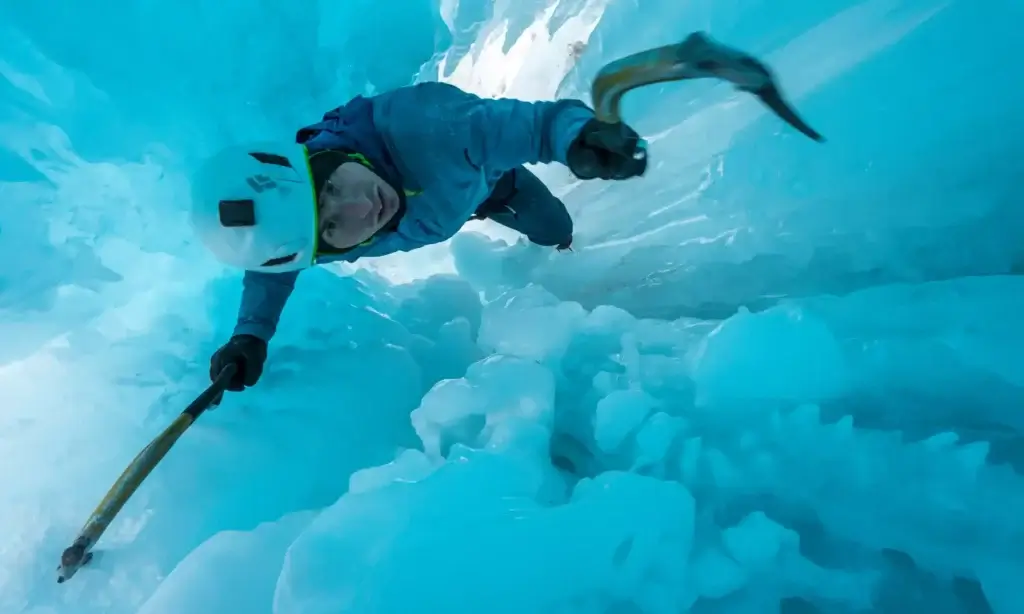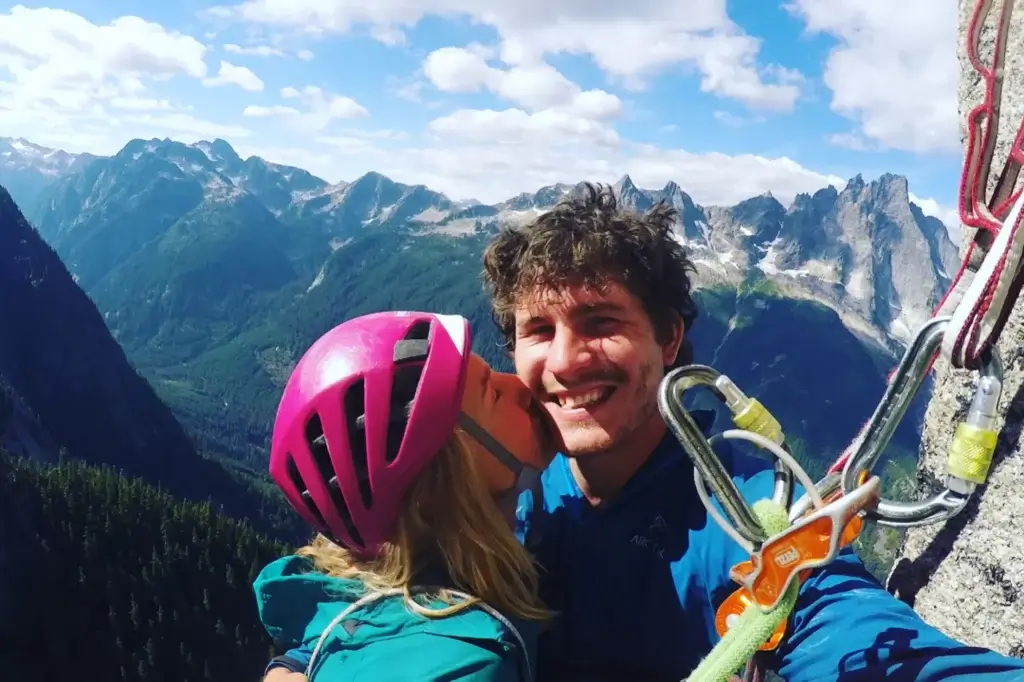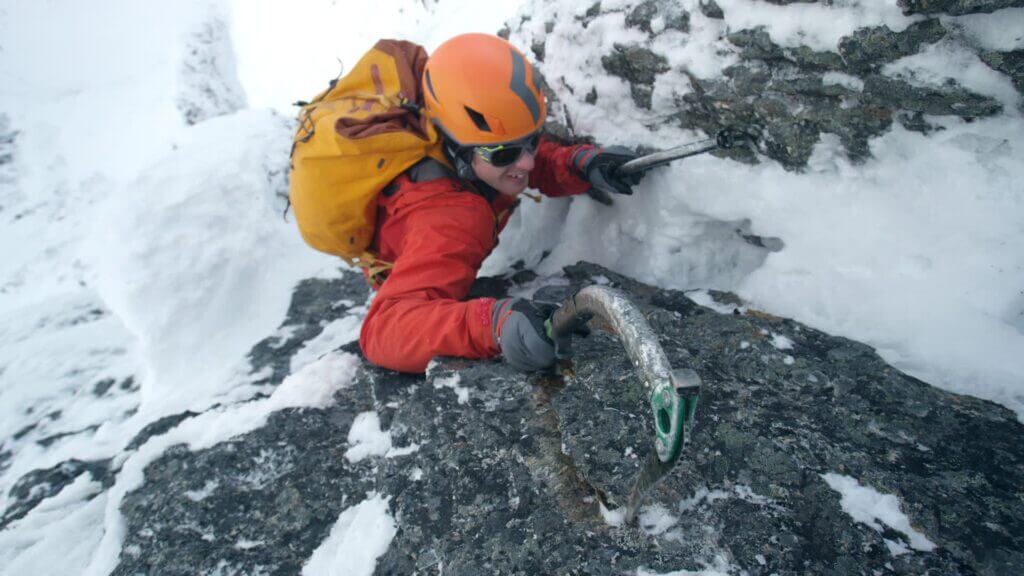Marc-André Leclerc became a well-known personality in the world of climbing with the release of the movie The Alpinist in 2021, but it could have been very different.
Being solitary by nature, uninterested in fame and avoiding cameras, Marc-André preferred to climb from relative obscurity to an incredibly high level. He could have kept going like this.
Even when people started to take notice in 2015, Marc-André dedicated himself to climbing for his passion. Despite his prodigious talent, he was not motivated by wealth, glory, or media coverage. His lasting legacy could have as much to do with his attitude as his accomplishments. The pursuit of adventure was his priority.
Marc-Andre Leclerc – growing up
Made for the great outdoors
Marc-André Leclerc was born on October 10, 1992, in Fraser Valley, Nanaimo, BC, Canada. He is the son of Michelle Kuipers and Serge Leclerc. Diagnosed with ADHD, he had difficulty adjusting to school at the beginning of his schooling. His mother then decided to homeschool him for the majority of his elementary education.
However, these formal lessons often do not last very long as his mother regularly takes him to the mountains or forests to observe rocks and plants. These experiences deeply mark the young boy and inspire him for a long time.
Leclerc was a great reader, and from the age of four, he knew the story of the conquest of Everest by Edmund Hillary and Tenzing Norgay in 1953. “He has always been fascinated by mountains,” says Michelle Kuipers.
Due to his social difficulties, he was educated at home for part of his youth. Despite this, he was intellectually and physically precocious.
Climbing, a love story
His love story with climbing begins when his grandfather gives him Chris Bonnington’s book, “Quest for Adventure”, which deeply marks him by showing images of tiny individuals scaling imposing snow and ice walls, thus stimulating his imagination.

At the age of nine, he discovered climbing on a wall in a shopping mall. Later that same year, he regularly enrolled at Project Climbing gym in Abbotsford, British Columbia, to climb.
In 2005, Marc-Andre Leclerc’s family moved near the Cascade Mountains to Agassiz. It was there that Marc-André started climbing by biking to the Harrison Bluffs, where he spent the night. He started alone, in running shoes and without formal training. Later, with a friend, he learned to use pitons and rope systems by reading old books.
At the age of 14, he worked in construction with his father to pay for his climbing equipment. One year later, he was setting lifting rings in the beams of his basement bedroom and hanging from them with his ice axes.
At the age of 15, his mother gave him a copy of “Mountaineering: The Freedom of the Hills”, which prompted Marc-André to join the British Columbia Mountaineering Society. Quickly, he began to participate in competitions and dominate in his age category. After finishing high school, he moved to Squamish, British Columbia, considered the Canadian Mecca of climbing.
Meeting Brette Harrington
Once in Squamish, he finds his place within the marginal climbing community. For several years, he leads a dirtbag life, climbing hard routes and partying.
He even lived for a time in a stairwell, which became more welcoming after he met his girlfriend, Brette Harrington, herself an experienced free climber.

His love for his girlfriend is very strong. From the first days of their relationship, Harrington and Leclerc were inseparable. They lived together in a stairwell, in the woods, and climbed relentlessly.
“Marc is interested in intense experiences, living fully,” Harrington states concisely in the film The Alpinist. She admits she was similar and that their mutual need to live on the edge partly explains their deep affection for each other. “We were on the same wavelength in terms of intensity,” she confides.
“The ascents I have made in extreme places in bad weather have been the most meaningful experiences of my life. I love this kind of thing.”
Brette Harrington
The “Marc-Andre Leclerc” style, a very particular style of climbing, is portrayed in the film The Alpinist.
The comparison with Alex Honnold
In the same way as Alex Honnold, Marc-André Leclerc will probably be known (outside of the climbing community) for his free solo climbs and first solo ascents.
Marc-André Leclerc achieved his ascents in full solo view on routes he had never explored before. Alex Honnold, on the other hand, had practised the route he took solo on El Capitan for the movie Free Solo many times, using a rope. Leclerc, on the other hand, would arrive at the bottom of a mountain and set off into the unknown.
Nothing had been rehearsed; nothing had been equipped or prepared in advance. Alpine solo climbing on sight is the pinnacle in the complex world of climbing. There is no margin for error, no safety net – there is only you. It’s like being an archer and having to hit the target with every arrow or be executed. That’s what alpine solo climbing on sight is.
The average spectator might see Leclerc as an adrenaline junkie, a common misconception among non-climbers. In reality, adrenaline is the enemy of good climbing. If you get scared, your “reptilian” amygdala – one of the most primitive parts of your brain – takes control, relegating your cerebral cortex to second place in the decision-making process, which can lead you to do stupid things. A large part of climbing is learning to control your fear.
The best climbers turn off their fear as if they were pressing a switch.
A complete climber
By observing Marc-André climb in all seasons and in terrifying conditions, it is evident that his approach and arsenal of skills are different.
At first, he seems to take pleasure in what he does. He easily transitions from free climbing to using ice axes, even in the most difficult situations. His movements seem effortless and (almost) consequence-free. His climbing is an expression of joy. If climbing is an art, this young man was undoubtedly a great master.
He focuses on the present moment and only thinks about the adventure, which makes him ready and able to move from one environment to another. Whether it be on rock, ice or snow, Leclerc could climb it all in one ascent and in any weather.
His speciality was mountaineering, and all the skills necessary to find a new route in a frightening rock and ice wall made him an almost unequalled mountaineer.
A different perspective
Watching Marc-André climb or listening to him talk about the mountain, one can see his purity and joy shine through. As climbing continues to grow and more and more young people see it as a competitive sport in the gym, Leclerc brings a different perspective.

The Alpinist will leave you breathless with Leclerc’s exploits and daring, but unlike other great adventure films, this is not the heart of the story. It is the portrait of a young man becoming an artist. Leclerc allows us to witness an awakening – physical, intellectual and emotional – of the human spirit. Through hard work and intensity, he becomes the one he dreamed of becoming right before our eyes.
A selection from Marc-André Leclerc’s well-known Palmarès.
It is difficult to draw up a list of Leclerc’s remarkable ascents, given that he has avoided fame. We only know the exploits he has chosen to share, those witnessed by others or mentioned in climbing magazines.
In reality, it is possible that he has achieved many other paths that nobody has ever heard of. And maybe that’s how it should be.
- Mont Slesse, Cascade Range – Full Solo (2015)
- Direct from the Lie – Cerro Torre North Face – First Ascent (2015)
- Solo ascent of the Muir Wall on El Capitan (2015)
- Reverse Tower Traverse, Patagonia – First Ascent (2015)
- Le Tire – bouchon – Cerro Torre, Patagonia, First Solo Ascent (2015)
- Tomahawk/Exocet Link Up – Aguja Standhardt, Patagonia – Solo Integral in Sight (2015)
- Mont Robson, Canadian Rockies – Infinite Patience – First Solo Ascent (2016)
- Mont Tuzo, Canadian Rockies – North Face – First Ascent of the Face (2016)
- Pillar East – Torre Egger, Patagonia, First Winter Solo Ascent (2016)
- Ha Ling Peak, Mount Lawrence Grassi − Solo Integral (2017)
- Echo Canyon − Grand Floor – First Full Solo Ascent (2017)
- Rim Wall, Canadian Rockies – Pinko (5.10). First complete solo ascent (2017)
- North face of the main tower, Mendenhall Towers. First Ascent (2018)
The Alpinist, an enthralling film.
The filmmakers
After the release of the documentary Free Solo, solo climbing sparked a new interest. Mortimer and Rosen realized that the story of an unknown climber achieving exceptional performances just for the sheer pleasure of it would be fascinating.
The two filmmakers considered that Marc-André Leclerc’s mysterious escalation deserved to be brought to the public’s attention.
The documentarians Nick Rosen and Peter Mortimer were already familiar with the world of climbing, having worked on several projects such as Valley Uprising, First Ascent, The Dawn Wall and the Reel Rock series.
However, even though they were immersed in the climbing community, neither of them knew Marc-André Leclerc. They had only heard about him through third-party accounts, but these accounts were enough to attest to his remarkable talent. That is how the filmmakers decided to highlight Leclerc’s story in their documentary L’Alpiniste.
The Alpinist is a captivating documentary that puts the portrait of Marc-André Leclerc in the spotlight. Although his ascents are incredibly stressful, Leclerc’s relationship with climbing is the true star of the film. The word “sport” doesn’t even seem appropriate to describe what he does.
With grace
Watching Leclerc climb The Alpinist, one cannot deny that his movements are graceful and fluid, whether it be ice, mixed, or rock climbing. There are no abrupt gestures or exaggerated stretches, nor even despair.
One can see a slow, almost lazy pace, like a modern dancer executing a complex figure. My mentor often told me that in climbing, to climb quickly, one must climb slowly. The experience gained creates confidence, and confidence creates a calm mind. A calm body is then capable of climbing in an astonishing way.
Sometimes, an athlete moves with an animal grace that most people cannot reach due to their own self-awareness. It is this quality, as well as Leclerc’s personality, that makes the most interesting aspects of this documentary.
We also see climbing sequences on rock and ice from Leclerc and Harrington, as well as commentary from famous climbers such as Honnold, Serfas, Messner and Blanchard, among others.
A tragic end.
On March 5th, 2018, Marc-André Leclerc and his partner Ryan Johnson, aged 34, succeeded in climbing a new route on the north face of the Mendenhall Towers near Juneau, Alaska.
The two climbers were dropped off near the mountain ridge on March 4th. The next day, Marc-André Leclerc posted a photo on his Instagram account showing their progress towards the 2100-meter summit.
Their plan was to return to the base camp two days later. However, authorities indicated that there had been no news of the two men since March 5th. According to their itinerary, the two climbers should have returned to Juneau the following Wednesday night, March 7th.
After Marc-André Leclerc’s girlfriend failed to contact him at the agreed time, she alerted the authorities.
The search was interrupted for several days due to bad weather conditions, but when the storm finally calmed down, the teams discovered ropes at the bottom of the climbers’ descent route, suggesting that they might have been victims of an avalanche, a rockfall or a cornice. Their bodies were never found.
Marc-André Leclerc will be known as a visionary alpinist, an adventurer, and a master of ice and rock. His life is also marked by a certain mystery. Much of his work was done alone, without an audience or camera. It is not possible to predict what his legacy will be. Leclerc climbed at a high level in all disciplines, often in extreme conditions, but he never sought recognition or fame. His passion for climbing was his main motivation.

